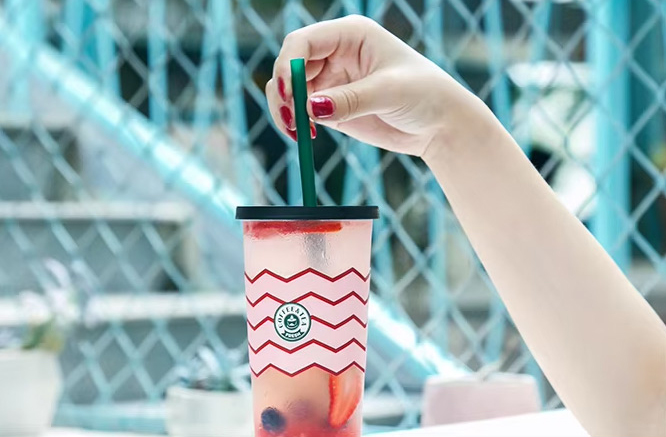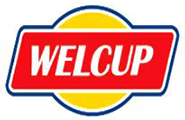In today’s fast-paced world, single-use plastic cups and lids have become ubiquitous, offering convenience for everything from morning coffee runs to office water stations. Among the most widely used materials for these products is polypropylene (PP), a versatile and durable plastic. This article delves into how PP cups and lids are manufactured, their practical benefits for storing beverages like coffee, milk, and tea, and essential safety considerations to ensure responsible usage.

Part 1: The Manufacturing Process of PP Cups and Lids
PP cups and lids are products of precision engineering, combining material science with advanced manufacturing techniques. Here’s a step-by-step overview of their production:
1. Raw Material Preparation
Polypropylene Granules: The process begins with polypropylene resin, a thermoplastic polymer derived from petroleum or natural gas. Food-grade PP is rigorously tested to meet safety standards (e.g., FDA, EU regulations) and is free from harmful additives like bisphenol A (BPA).
Additives: Optional additives such as UV stabilizers, colorants, or anti-static agents may be blended into the resin to enhance functionality or aesthetics.
2. Injection Molding
Cup Formation: PP resin is fed into an injection molding machine, where it is heated to 200–300°C until molten. The liquid polymer is injected into cup-shaped molds under high pressure. Cooling systems solidify the material within seconds, producing seamless, leak-proof cups.
Lid Production: Similarly, molten PP is injected into lid molds designed with precise grooves to fit standard cup rims. Features like sip holes, vent slots, or tamper-evident seals are incorporated into the mold design.
3. Post-Processing
Trimming: Excess plastic (flash) from molding is removed mechanically or via laser trimming.
Printing: Brand logos or usage instructions (e.g., “Recyclable PP5”) are printed using food-safe inks.
Quality Control: Cups and lids undergo checks for dimensional accuracy, structural integrity, and contamination. Automated systems reject defective units.
4. Packaging
Finished products are stacked, wrapped in protective film, and shipped to distributors, cafes, or retail stores.
Part 2: The Practical Benefits of PP Cups and Lids
PP’s unique properties make it ideal for beverage packaging. Below are its key advantages:
1. Versatility for Hot and Cold Drinks
Heat Resistance: PP cups can withstand temperatures up to 120°C, making them suitable for hot coffee, tea, or soups without deforming or leaching chemicals.
Cold Retention: The material’s insulating properties help keep iced beverages cold longer than paper or polystyrene (PS) alternatives.
2. Leak-Proof and Secure Lids
Snap-Fit Design: PP lids create airtight seals, preventing spills during transport. Features like sip-through tabs or sliding closures enhance user convenience.
Customization: Lids can be tailored for specific needs, such as whipped cream openings for desserts or stirrer slots for mixed drinks.
3. Lightweight and Durable
PP cups are shatterproof and far lighter than glass or ceramic, reducing shipping costs and breakage risks. Their rigidity ensures they won’t collapse when held.
4. Cost-Effectiveness
Mass production via injection molding keeps costs low, making PP cups economical for high-volume settings like stadiums, conferences, or fast-food chains.
5. Recyclability
Marked with the recycling code “PP5,” these cups can be reprocessed into new products, aligning with circular economy goals—though infrastructure limitations often hinder widespread recycling.
Part 3: Common Applications in Daily Life
PP cups and lids serve diverse roles across industries:
1. Coffee and Tea Culture
Takeaway Coffee: PP cups with heat-resistant lids are staples in cafes like Starbucks or Dunkin’, enabling safe handling of hot lattes or cappuccinos.
Milk Teas and Boba: Thick PP cups with wide lids accommodate tapioca pearls and thick straws, popular in Asian beverage chains.
2. Office and Public Use
Water Cooler Cups: Disposable PP cups in offices promote hygiene while minimizing shared glassware.
Healthcare Settings: Hospitals use PP cups for patient hydration due to their sterility and disposability.
3. Food Service Innovations
Dessert Cups: PP’s clarity allows layered parfaits or sundaes to be displayed attractively.
Soups and Side Dishes: Microwave-safe PP containers enable reheating without transferring food.
4. Outdoor and Events
PP cups are favored at festivals, picnics, and sports events for their durability and ease of disposal.
Part 4: Safety Guidelines and Precautions
While PP is generally safe, improper use can pose risks. Here’s how to maximize safety:
1. Temperature Limitations
Avoid Extreme Heat: Never use PP cups in ovens, over open flames, or with boiling liquids (>120°C), as overheating may cause warping or chemical breakdown.
Microwave Caution: PP is microwave-safe for short durations (1–2 minutes), but prolonged heating should be avoided.
2. Single-Use vs. Reuse
Single-Use Design: Most PP cups are intended for one-time use. Repeated washing can cause micro-cracks, harboring bacteria or accelerating microplastic release.
Reusable Alternatives: For eco-conscious consumers, thicker, reusable PP tumblers are available, designed for long-term use.
3. Chemical Exposure Risks
Avoid Harsh Cleaners: Abrasive scrubs or strong acids (e.g., vinegar) can degrade the plastic. Use mild soap and soft sponges.
No Alcohol Storage: PP is not recommended for long-term storage of high-alcohol beverages, which may interact with the polymer.
4. Recycling and Disposal
Check Local Guidelines: Confirm if your municipality accepts PP5 items. If not, dispose of cups in general waste rather than contaminating recycling streams.
Compostable Claims: Traditional PP is not compostable, though newer bio-PP variants (made from sugarcane) are emerging.
5. Child Safety
Supervise Usage: PP cups can tip easily, posing spill risks. Lids with secure locking mechanisms are advisable for children.
Part 5: Innovations and Sustainability Efforts
The PP packaging industry is evolving to address environmental concerns:
Bio-Based PP: Companies like Braskem produce PP from renewable sugarcane, reducing reliance on fossil fuels.
Enhanced Recycling Tech: Chemical recycling methods break down PP into raw monomers, enabling infinite reuse without quality loss.
Lightweighting: Thinner yet sturdy cup designs cut material use by 20%, lowering carbon footprints.
Conclusion
PP plastic cups and lids exemplify the intersection of practicality, affordability, and safety in modern packaging. From their precise manufacturing via injection molding to their role in global food culture, these products simplify daily life while adhering to rigorous health standards. However, their environmental impact necessitates mindful usage—prioritizing recycling, resisting overconsumption, and supporting innovations in sustainable materials. By balancing convenience with responsibility, consumers and businesses alike can ensure that PP cups remain a viable, eco-friendlier choice in the circular economy of tomorrow.
Whether you’re sipping a latte on the go or hydrating at the gym, PP cups offer a reliable, lightweight solution—just remember to handle them with care for both your health and the planet’s.

